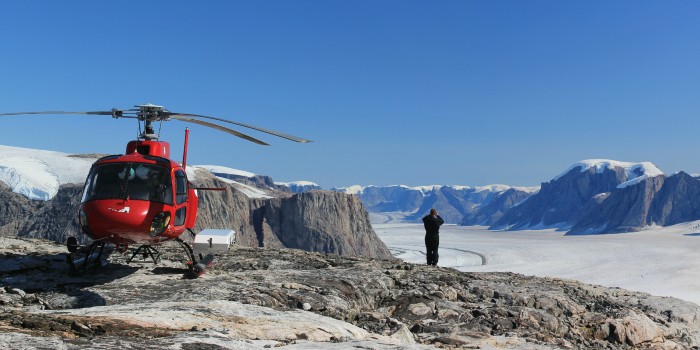
The Greenland ice sheet is melting faster than ever before according to a new study by DTU Space. Satellite images than can penetrate to the bedrock beneath the sheet show that ice cover in Greenland has shown dramatic changes over time. A recent study, published in PNAS, reports that ice melt has increased fourfold since 2003, with enormous losses of over 400 km3 per year!
Such extreme ice melt not only influences the salinity of the ocean in the vicinity of the ice sheet, but also has impacts on the atmosphere.
"In addition to the well-known areas of melting from the glaciers of northwestern and south-eastern Greenland, the ice now also melts in southwest Greenland. It is surprising, and in the future, melting water from this area is likely to make a major contribution to the global sea level rise," says Professor Shfaqat Abbas Khan from DTU Space, and INTAROS partner.
Although consistent annual increases in ice melt was detected since 2003, in 2013 the melt seemed to slow. This recuperation was short-lived as the melt gathered pace again 12-18 months later.
"The current pattern of ice melt is both striking and surprising, " according to Prof. Khan.
The melt in southwest Greenland is not due to melt water from the glacier penetrating the ice shelf but rather to the warmer air over the land.
Greenland and the Arctic are affected by a phenomenon called the North Atlantic Oscillation (NAO), which alters the climate from year to year due to variations in atmospheric pressure pressure. When this phenmomenon compounds with other climactic changes, the impacts become extreme.
"The reason why we see such massive meltdown in these years is that the temporary warming from the NAO coincides with a more stable global warming. 30 years ago, the two effects were not large enough to accelerate the melting," says professor at Ohio State University Michael Bevis, the lead author of the new study.
"But around 2000, the ice cap reached a tipping point, so it now melts far faster than the average for 1950 to 2000."
To find out more about this melting ice sheet, click on this link: "Accelerating changes in ice mass within Greenland and the ice sheet's sensitivity to atmospheric forcing" can be found here at PNAS (Proceeding of the National Academy of Sciences, USA).
01 March 2019